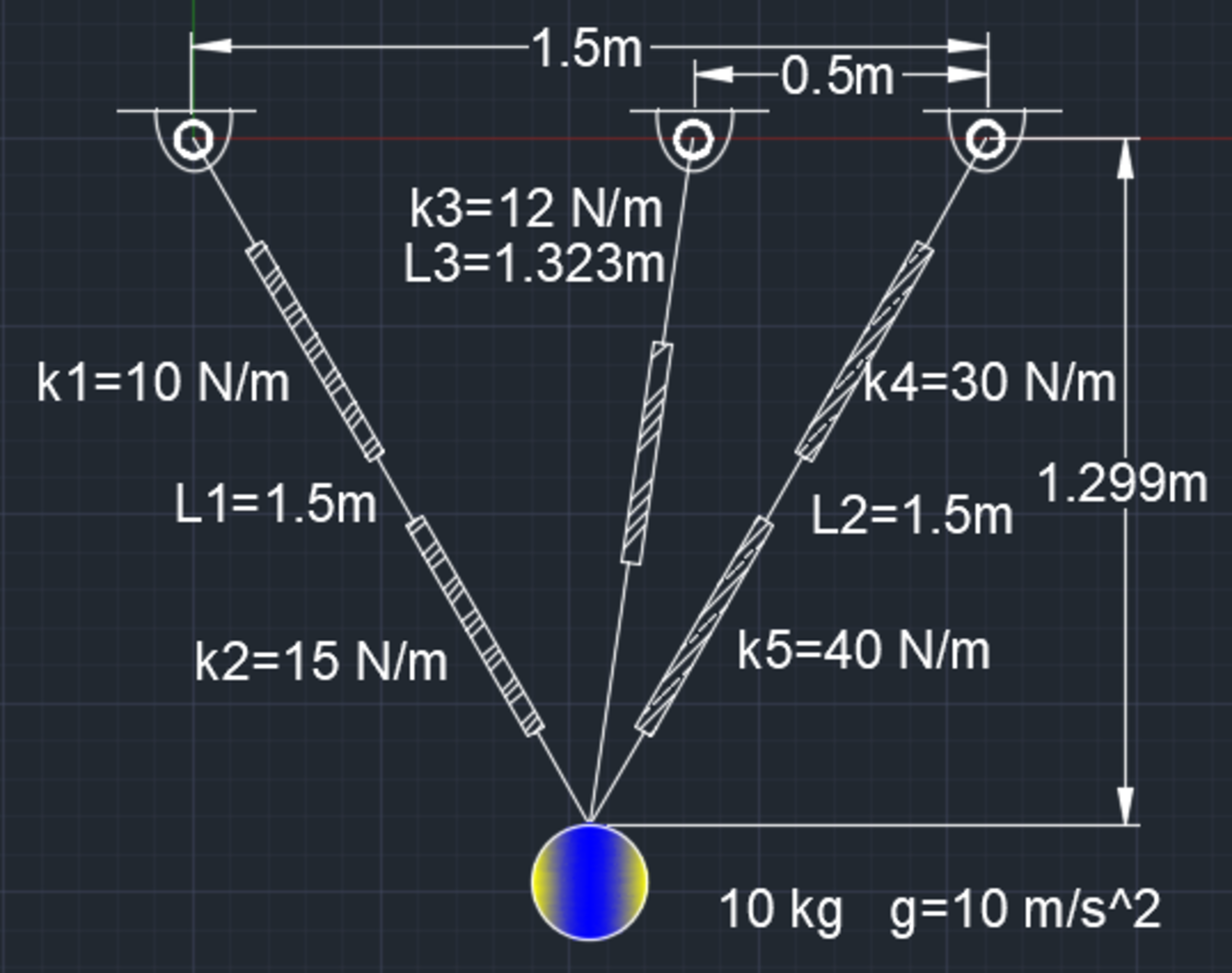Springs Supporting Hanging Mass
 Five springs support a 10 kg mass as indicated in the diagram. The spring constants and unstretched lengths are given. What is the distance of the mass from the leftmost support in the equilibrium condition? Give your answer in meters to the nearest 1/100 th. Note: The value 1.299 is the initial distance before the mass is released.
Five springs support a 10 kg mass as indicated in the diagram. The spring constants and unstretched lengths are given. What is the distance of the mass from the leftmost support in the equilibrium condition? Give your answer in meters to the nearest 1/100 th. Note: The value 1.299 is the initial distance before the mass is released.
The answer is 4.41.
This section requires Javascript.
You are seeing this because something didn't load right. We suggest you, (a) try
refreshing the page, (b) enabling javascript if it is disabled on your browser and,
finally, (c)
loading the
non-javascript version of this page
. We're sorry about the hassle.
Nice problem. I used a hill-climbing algorithm to solve. I reworked the nomenclature a little bit to suit my taste. Results are commented at the bottom of the code. I would suggest removing the 1 . 2 9 9 meter vertical distance measurement from the picture, as it is somewhat misleading.